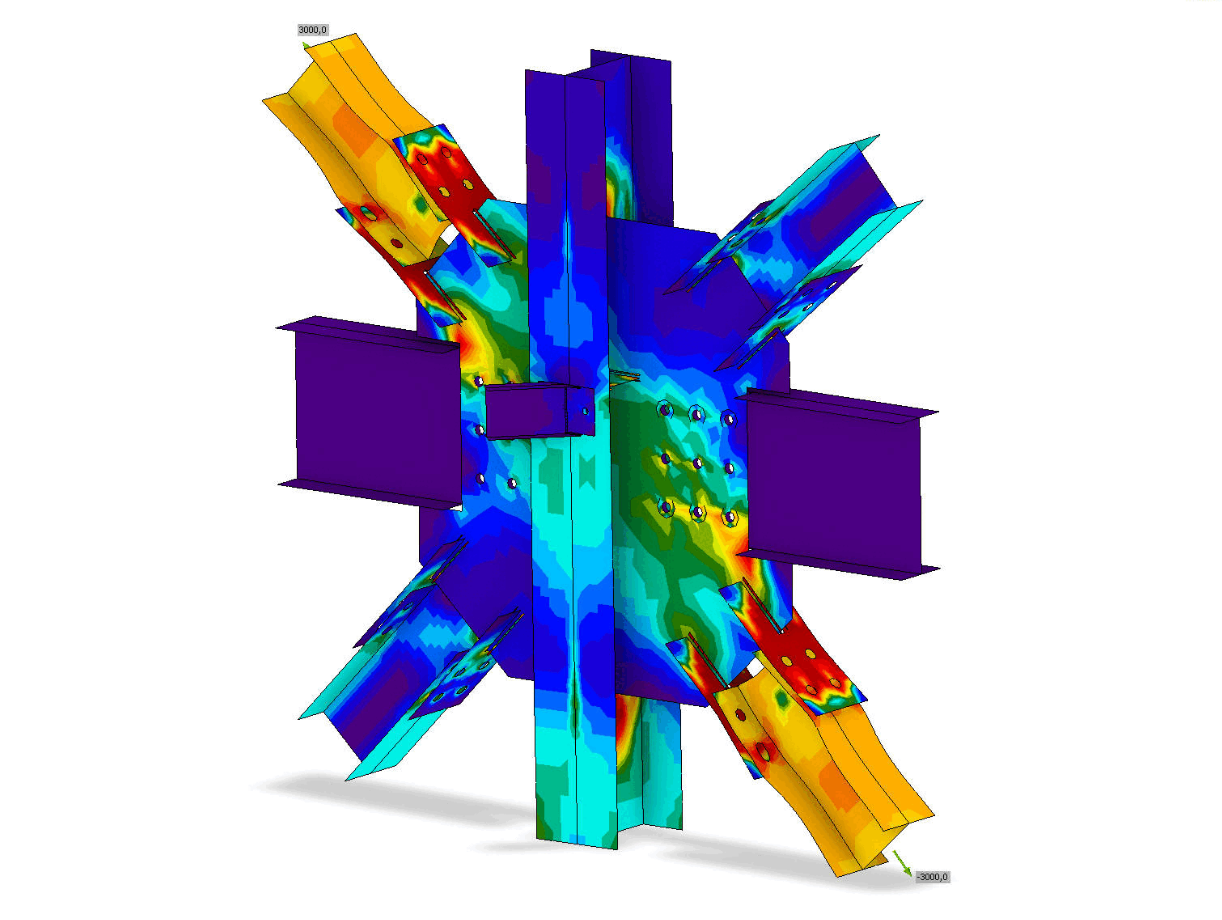
When it comes to steel structures, the real magic often lies not in the beams or columns themselves, but in how they come together. Joints, especially complex, multi-directional ones, are where theory meets reality, and where design decisions can make or break a project. In this blog, we take you behind the scenes of a highly demanding connection we engineered, showcasing both the challenges and the solutions that brought it to life.
The Challenge: One Column, Eight Beams, Zero Room for Error
The joint shown above is a typical example of a spatial connection where eight beams, including diagonal bracing elements, meet at a central vertical column. This type of node is common in trusses, towers, industrial halls, and bridge structures, but designing it correctly is anything but routine.
Several constraints had to be considered:
With so many beams converging at a single point, each under its own load path and angle, traditional hand calculations are no longer sufficient, and guesswork is unacceptable.
From Geometry to Reality
To analyze and optimize this connection, we used IDEA StatiCa, a specialized tool for steel connection design. The software allowed us to simulate realistic stress flow, plastic strain, and deformation under load combinations.
What you’re seeing in the image is a color stress map from that analysis:
This visual feedback is crucial. It enables us to pinpoint stress concentrations, validate the adequacy of welds and bolts, and fine-tune stiffener plates or gussets where needed.
Engineering Solutions: Where Simplicity Meets Performance
Here are a few design decisions that made the difference:
We also had to consider erection sequencing, ensuring that the joint could be assembled on-site without requiring excessive temporary supports.
Why it Matters
These kinds of joints are more than just technical exercises, they directly influence the cost, durability, and safety of the structure. Investing time into their correct design helps:
Conclusion: Complexity Requires Expertise
Designing multi-directional steel joints isn’t about trial and error – it’s about applying the right tools, engineering logic, and experience. At Cadeli, we specialize in the modeling, verification, and optimization of such connections, ensuring that no node is left behind.